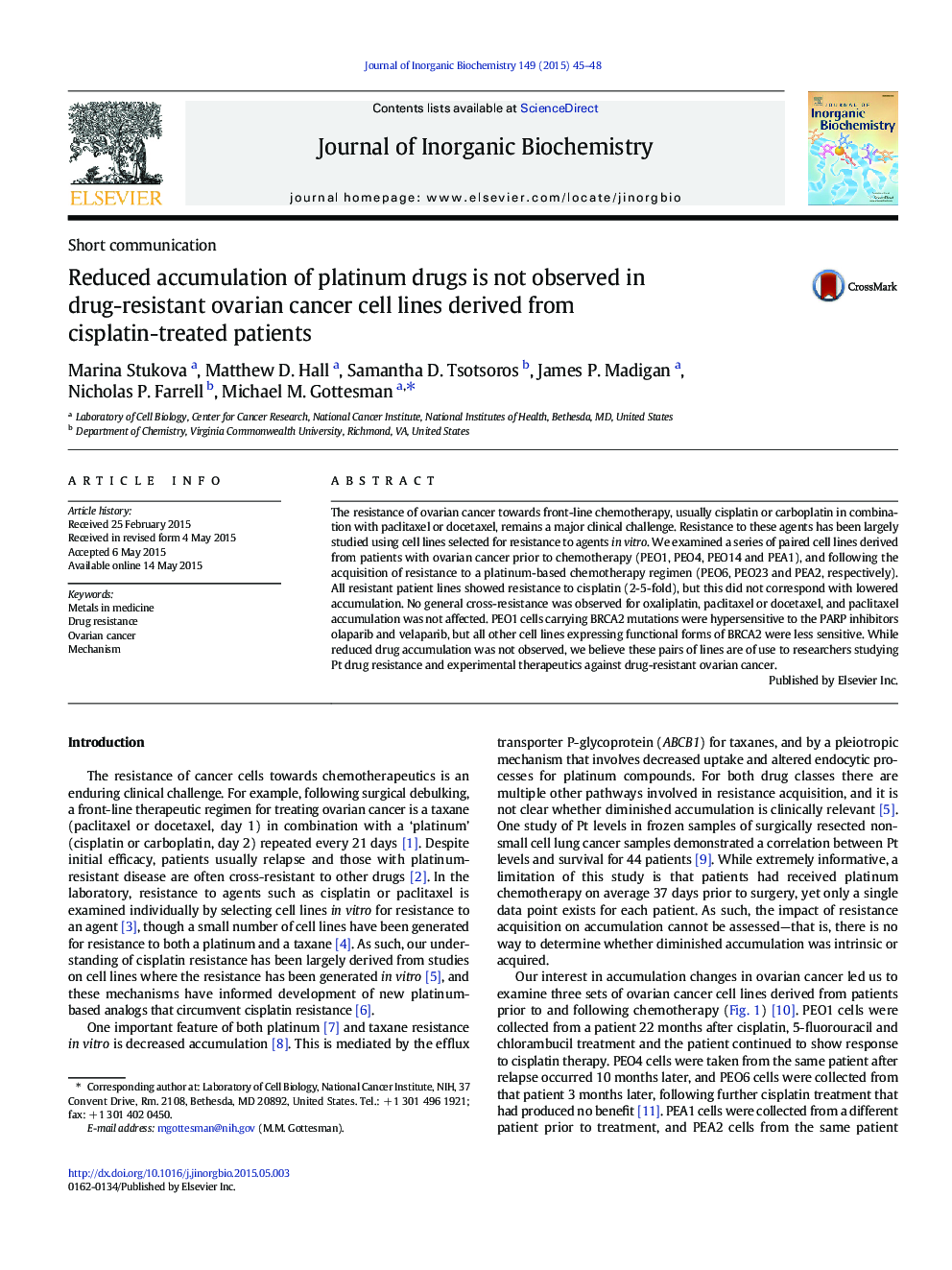| Article ID | Journal | Published Year | Pages | File Type |
|---|---|---|---|---|
| 1317113 | Journal of Inorganic Biochemistry | 2015 | 4 Pages |
The resistance of ovarian cancer towards front-line chemotherapy, usually cisplatin or carboplatin in combination with paclitaxel or docetaxel, remains a major clinical challenge. Resistance to these agents has been largely studied using cell lines selected for resistance to agents in vitro. We examined a series of paired cell lines derived from patients with ovarian cancer prior to chemotherapy (PEO1, PEO4, PEO14 and PEA1), and following the acquisition of resistance to a platinum-based chemotherapy regimen (PEO6, PEO23 and PEA2, respectively). All resistant patient lines showed resistance to cisplatin (2-5-fold), but this did not correspond with lowered accumulation. No general cross-resistance was observed for oxaliplatin, paclitaxel or docetaxel, and paclitaxel accumulation was not affected. PEO1 cells carrying BRCA2 mutations were hypersensitive to the PARP inhibitors olaparib and velaparib, but all other cell lines expressing functional forms of BRCA2 were less sensitive. While reduced drug accumulation was not observed, we believe these pairs of lines are of use to researchers studying Pt drug resistance and experimental therapeutics against drug-resistant ovarian cancer.
Graphical abstractThe resistance of ovarian cancer to chemotherapy remains a major clinical challenge. We examined paired ovarian cancer cell lines prior to and following chemotherapy. Resistant patient lines did not display with lowered accumulation of cisplatin.Figure optionsDownload full-size imageDownload as PowerPoint slide
